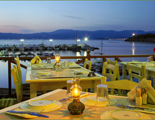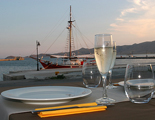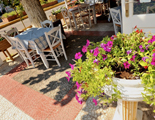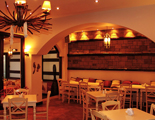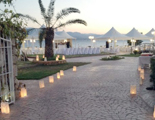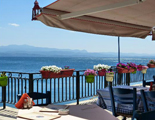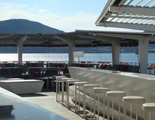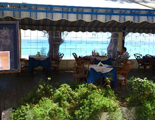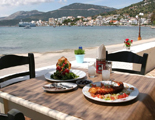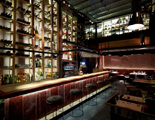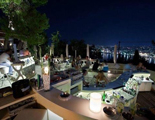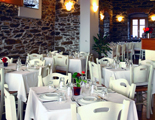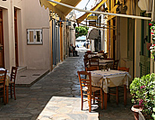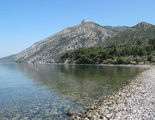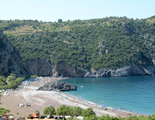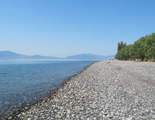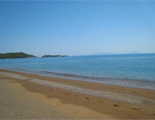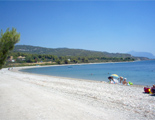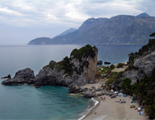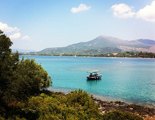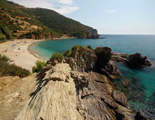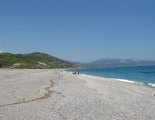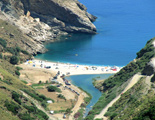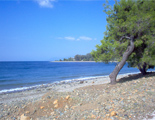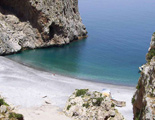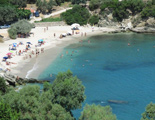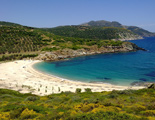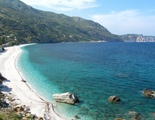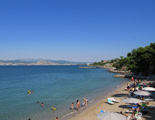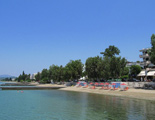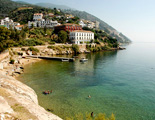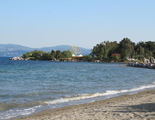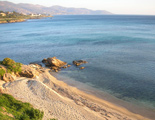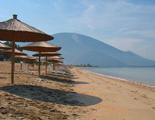 Evia Travel Guide
Evia Travel Guide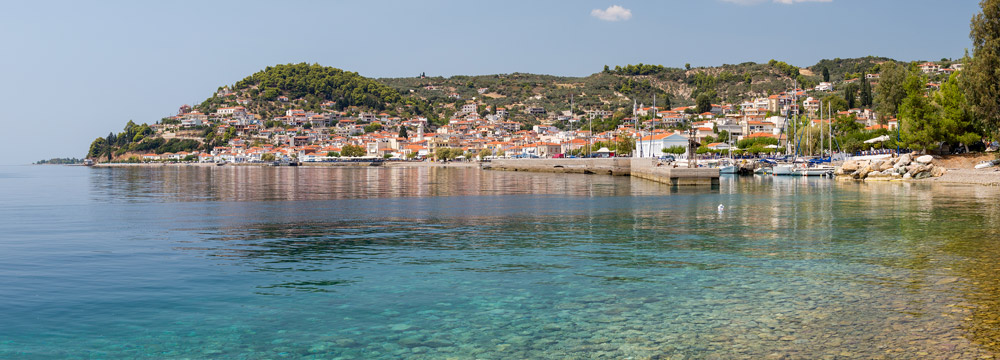
It is widely believed that Evia owes its name to the naiad Evia, who was the daughter of Asopos river (in Ancient Greece, rivers were often considered to have divinity). On the other hand, Evia (deriving from the word combination “eu” + “vous” that means the good ox in Ancient Greek) is a name that indicates the island’s fertility and the breeding of cattle.
Evia was inhabited in the Paleolithic Era and there is proof of several settlements in many areas: Manika (Chalkida), Artaki, Rovies, Psachna, Politika, and others. Some settlements, like for example Xiropolis (close to Vasilikos) were probably very prosperous and had commercial activities that involved Asia Minor and the North Aegean. In the Neolithic Era, the number of settlements was even larger and they were spread throughout the island, whereas in the Copper Era there were many inhabitants in the central and southern Evia. During the Prehistoric Era, the main activities of the inhabitants were agriculture and livestock.
Many changes were observed on the island in the Ancient Times; the economy shifted from agriculture and livestock to commerce and shipping. The two most powerful cities were Chalkida and Eretria. Chalkida was famous for its pottery that was exported all over the Ancient World and Eretria was a renowned maritime city. The beginning of the 8th century B.C. was the end of hereditary kingship on the island. The new system of governance was oligarchy.
During the Ancient Times, Evia was very powerful and prosperous. For about three centuries (770 B.C. till 500 B.C.), the Chalkideans and the Eretrians colonized the Aegean Islands, Macedonia and Italy. However, there was a war between the Eretrians and the Chalkideans concerning the dominance of the river Lilas (“The war of Lilas”). After the war, there was some kind of revelation and oligarchy became history for Evia.
In the Classical Era, Evia was attacked by the Persians twice: first Eretria was destroyed and then Chalkida. After that, Chalkida, Eretria and Istiea participated in the 1st Athenian Alliance.
Although Evia sided with Athens during the Peloponnesian War, it betrayed Athens twice. However, it became a member of the 2nd Athenian Alliance. In 358 or 357 B.C. there was another civil war in Evia, with the intervention of Thiva and Athens. After that, Philip the 2nd started to interfere and conquered Chalkida. From that time on, Evia sided with Macedonia, until the Roman dominance.
During the Roman Era, the cities of Evia had to pay taxes to Rome and were not very autonomous. However, some were quite prosperous; Karystos exported its renowned marble, Edipsos attracted Roman emperors with its thermal spa, and Chalkida was the center of activities of the island. In 88 B.C., king Mythridatis attacked the Roman army in Evia and was successful for a short period of time; but the Roman General Sylla won in the end.
In the Medieval Times, Evia was far from being a serene place. In 1204, Evia was conquered by the Francs. In 1258 the Venetians selected Evia as their main nautical base. In the 14th century (1340-1398 A.D.), the island was attacked multiple times, with the Venetians and the Genovese trying to dominate the island simultaneously. The Venetians won in the end, but not for long; in the 14th century, the Ottomans began attacking Evia. In 1450, repeated earthquakes destroyed the walls of Chalkida and the Venetians had to rebuild them in order to protect it from the Ottomans.
In 1470, the Ottomans conquered the island, destroyed a large part of it and killed many inhabitants. The living conditions on the island significantly deteriorated and this is why the inhabitants tried to rebel against the Ottomans twice, once in 1668 and once in 1770. However, both times they did not succeed.
The population really suffered during that period and it was only natural that the Evia inhabitants would participate in the Greek Revolution of 1821. The revolution began in Limni and sprawled across the island very fast. Although based on the protocol of London Evia was officially part of Greece in 1830, it actually became part of it in 1833.
Troops from Evia participated, and were very successful, in the Balkan Wars. After the Asia Minor Disaster, Evia received more than 9,000 inhabitants in total, coming from the Asian coasts. During World War II, many cities were bombarded (1941). From 1941 to 1944, the island was dominated by Germans and/or Italians. The years after the War were very tough for Evia, similar to the rest of Greece. In 1962 the famous bridge of Chalkida was built, which made the island easily accessible from the mainland.
Today, Evia has more than 200,000 inhabitants, involved in commerce, tourism, agriculture, fishing and livestock. Its amazing natural beauties combined with its proximity to Athens and the mainland, as well as the Aegean Islands, make Evia an increasingly preferred destination. Nowadays, visitors from Greece and abroad choose to spend their holiday in Evia and discover its dazzling beaches, unique nature and interesting culture.
According to the Greek Mythology, the first Evia inhabitants were the Titans. When the Giants arrived on the island, they had to fight against the Titans in order to conquer it. These fights were so fierce, that every time they took place there was an earthquake. So, every earthquake in the prehistoric times was attributed to a fight between the Titans and the Giants.
Evia is among the possible places of birth for Goddess Hera, along with Samos, Argos and Arcadia. The myth suggests that no matter where she was born, she was raised in Evia on the mountain Ochi by the nymph Makri. This is where Zeus saw her and fell for her; so, disguised into a cuckoo that was shaking because of the cold, he approached her; and when Hera placed the bird on her breast, Zeus transformed into his usual form and tried to make love to her. The goddess resisted until he promised to marry her. In several texts, there are mentions of a temple of Hera on mountain Ochi, but it has not been found yet.
On his way to Evia with his wife Diianeira, Hercules had to pass the river Evinos. The centaur Nessos offered to help them by carrying them on his back; only, he could carry one person at a time. First, he carried Hercules and when he came back to carry Diianeira, he tried to rape her. Hercules saw that and he killed Nessos with his arrows, poisoned by the poison of Lernaia Hydra. Before he died, Nessos told Diianeira that she should keep his blood and use it to create an antidote, in case Hercules didn’t love her anymore.
After arriving to Evia, Hercules won the archery games and the trophy was Ioli, the daughter of king Euritos. But the king denied giving Ioli to Hercules. So, Hercules killed Ioli’s brother and then felt so guilty that he went to the oracle of Delphi, where he was advised to become a slave for three years in order to be forgiven. After three years of slavery, Hercules returned to Evia in order to revenge Euritos and take Ioli, always having Diianeira with him. Hercules achieved in conquering Evia and managed to take Ioli with him too, but he wanted to thank Zeus by preparing a thanksgiving sacrifice. So, he sent his messenger Lihas to his wife, in order to ask for a special mantle for the sacrifice.
Diianeira had heard that Hercules took Ioli with him and thought he was in love with her; so, she sank the mantle in the blood of Nessos (which was poisoned) and when Hercules put the mantle on, he immediately got sick. Hercules thought that Lihas was responsible for this and threw him in the sea. This is how Lihadonisia were created, according to the myth. Meanwhile, Hercules was in terrible pain and he decided to burn himself on mountain Oiti. This is why the top of this mountain is called “Pyra”, which means fire in Greek. When Diianeira learnt what had happened, she committed suicide and her grave was situated on the foot of mount Oiti.
Evia is not only a big island, but it is also characterized by amazing landscape diversity and many interesting venues to visit. Evia has high mountains, rivers, canyons, dazzling beaches, imposing monasteries and picturesque chapels, wetlands, lakes and lagoons, museums and even a petrified forest!
Evia is a favourite destination of Orthodox Christians, since it hosts Byzantine churches and monasteries, where miracles are believed to have happened.
Among the monasteries worth visiting is the Monastery of Galataki in Limni built in the 8th century A.D. , where nuns are involved in producing Persian carpets; the Monastery of Saint George in Ilia (close to Edipsos) that boasts a truly imposing architecture and was built on the ruins of an ancient temple devoted to Apollo; the Monastery of Saint (Osios) Daviv established by Saint (Osios) David himself on mountain Kavalaris, where visitors can relish the amazing view from 927 m. of altitude; the relatively new Monastery of Saint Eirini Crhysovalandou in Rovies with a traditional architecture; the impressive Monastery of the Assumption of Virgin Mary in Makrymalli (close to Psachna); the Monastery of Perivleptos in Politika devoted to the Assumption of Virgin Mary that has been declared a preserved monument; the Monastery of Saint George ARMA located at 20 km. to the east of Chalkida built in 1141 A.D.; and the Monastery of Transfiguration of Christ in Kimi, which has a beautiful architecture, with arches and stones and offers a panoramic view to the sea.
Also, there are churches in Evia that are connected with miracles and have a strong spiritual atmosphere, like the Church of Saint John Rossos in Prokopi that hosts the sacred relic of the Saint and attracts hundreds of thousands of visitors per year, or the Church of Saint Dimitrios in Avlonari, which is considered to be the oldest church on the island.
There are also churches that are worth a visit because they are very picturesque or they are located in a fantastic venue, like the beautiful white Church of Panagia Ntinious surrounded by planes and cypresses close to Istiea or the Church of Hiliadou right above the homonym beach, which was built in the middle of the 9th century A.D. and was named after the Greek word “hilia” that means a thousand, because it was the thousandth church built after the end of the war on icons.
The list of churches to visit on the island could be endless. What is certain is that in Evia, every area, every small village, has an interesting church worth visiting!!
The fact that Evia has been inhabited since the Prehistoric Era explains why there are three archaeological museums on the island.
The Archaeological Museum of Chalkida houses findings from 11.000 B.C. till the 3rd century A.D., which have been brought from throughout the island. Its collection includes house objects, jewels, tools, weapons, statues, and objects from ancient temples.
The Archaeological Museum of Eretria hosts objects, parts of temples, jewels, etc., from different eras, but is mainly famous for its sculptures and especially for the sculptures of the Ancient Temple of Apollo. Among them, the sculpture of Thiseas and the Amazon stands out for its details.
The Archaeological Museum of Karystos is the smallest of the three museums; nevertheless, it houses interesting objects, tombstones, inscriptions with the ancient alphabet of Chalkida, and sculptures.
There are also two more archaeological collections, in Edipsos (in the spa building of the Hellenic Tourism Organization) and in Ano Potamia (next to the church of the Assumption of Virgin Mary) close to Kimi.
Another interesting museum is the Historic National Museum of Anastasios Liaskos in Kontodespoti, which was established in 1995 and presents the recent history of the island, starting from the 1821 Revolution till today.
Moreover, there are six Folklore Museums: in Chalkida, Kimi, Karystos, Agia Anna, Limni and Amarhynthos. All host objects of the everyday life through the centuries, embroideries, art objects, tools and local costumes.
The Museum of Paleontology in Kerasia will thrill young visitors and will astonish older ones, since it hosts fossils from 10 million years ago! So far, 24 different species of animals have been proved to have lived on the island based on the discovered fossils. This museum is not to be missed!
Another venue that will delight young visitors is the Nautilus Museum of Marine Life located in Agiokampos (close to Edipsos). Apart from hosting beautiful sea-related objects, the museum presents the relationships between sea objects and aspects of everyday life, like architecture, communication, etc.
Moreover, the Museum of National History of Istiea, created by hunters of the area, presents the nature of Evia through embalmed animals, fish birds, minerals, rocks, shells, plants and insects.
Last but not least, the Museum of Friends of Giannis Skarimbas, the renowned Greek writer from Evia, is located in Chalkida and houses his objects and books, giving visitors some more information on his life.
There are hundreds of villages in Evia and each one has something different to offer. In the northern part, villages are built on mountains or along the coast. Some of them are larger and provide contemporary amenities and others remind visitors of past decades. Among the places worth a visit in northern Evia are of course Edipsos with its thermal spa, Rovies, Hronia, Agios Georgios and Lihada for their gorgeous beaches, Istiea that offers all amenities and great food, the picturesque coastal village of Orei, the traditional village of Kyrinthos, and Drymonas with the river Sipias and its fantastic waterfalls.
In southern Evia, apart from the main big villages of Karystos, Marmari and Styra, there is a plethora of small traditional villages. Around Karystos, there are the “villages of Gourna” (Aetos, Chora, Grambia, Kalyvia, Lala, Mekounida, Metochi, and Myloi) that are built in the foot of mount Ochi and they are surrounded by olive groves and planes. Around Marmari, there are several villages that have the atmosphere of a past era. Among them: Melissonas, Paradeisi, Figias, Hania, and Stoupaioi.
In the central-eastern part of the island, the biggest village is Kimi, but there are several villages worth a visit: Limnionas with is dazzling beach, Oxilithos with an amazing view both to the hills around and to the sea, Avlonari with its fabulous panoramic architecture, Konistra with the Kolethra Source and its turquoise waters, and the picturesque village of Oktonia with its uniform low white houses with red roofs!
In the central-western coast, Eretria is the biggest village hosting museums, archaeological sites, many amenities and a lovely beach. Nearby there are the beautiful coastal village of Amarynthos, the village of Vasilikos with picturesque chapels and imposing old neoclassical houses, and the village of Fylla hosting the house of the Greek hero Andreas Miaoulis and an impressive tower.
Close to Chalkida, the places worth a visit are the coastal village of Nea Artaki, Psachna that offers a breathtaking view of mountain Dirfys, Politika with their traditional square and the traditional village of Pissonas.
Chalkida, the island’s capital, is an unsurpassable destination; apart from hosting several museums and monuments, a Castle (“Castle of Karampampas”), and the many choices of accommodation, dining and leisure, this blessed place offers the opportunity of observing the unique phenomenon of the Euripos tide. Here, the sea water current changes direction from 6 up to 14 times per day, depending on how many days have passed from the last full moon! And what better place for observing the waters than the Chalkida Old Bridge?
Evia could not but have very interesting archaeological sites.
Very close to Chalkida, there was the prehistoric Chalkida, where the archaeological site of Manika is situated. Visitors may admire ruins of rectangle houses with yards around them, roads, and unusual U-shaped buildings. The latter were probably warehouses of wheat. There is also a cemetery, where researchers found many objects that are presented in the Archaeological Museum of Chalkida.
In the area of Eretria, there are two important sites: the Ancient Eretria, which was built on a hill to the west of Eretria, and a settlement of the Middle Neolithic Era in the area of Tsaggli, Magoula. The ancient walls of the Ancient Eretria acropolis are still visible today, although they do not form a continuous wall; eight parts of the ancient walls are saved today.
Moreover, there is an ancient theatre and ruins of the ancient temple of Dionysos, while there is also the Tomb of Erotes which goes back to the dominance of the Macedonians on the island. In Tsaggli, archaeologists have found four prehistoric houses, three of which were successive. Of course, several objects were found in both places, which are now hosted in the Archaeological Museum of Eretria.
Between Chalkida and Eretria, visitors will find the archaeological site of Lefkanti, where a very prosperous geometric settlement was situated. The Iroon of Lefkanti is an imposing arched building that was built in the 10th century B.C. and is considered to be the oldest monument of the Early Iron Era.
The archaeological site of Kimi is situated on Viglatouri hill and consists of the ruins of a prehistoric and geometric settlement which included houses, roads, temples and graves. Although parts of the ruins are visible, there still remains a lot of research to be conducted in order for this settlement to be fully brought to light.
The archaeological site of Archamboli includes houses, roads, metallurgy workshops, tanks and fortifications! In this area, researchers found Karystian coins and a leaden utensil.
The mausoleum of Karystos stands out among sites in the southern part of the island, as it is both well preserved and very imposing. Made of white marble, it must have been the grave of a Roman dignitary.
Another interesting archaeological site is located close to the village of Fylla, on a hill called Vrachos. Here, archaeologists revealed an ancient fortress, probably of the 6th century B.C. The fortress is quite big (230 m. x 80 m.) and there are also two complementary buildings next to it. A plethora of ceramic objects were found here as well.
Smaller, but not less important archaeological sites are located in Amarynthos (with a prehistoric settlement, a classical settlement and a temple devoted to Artemis), Artemisio (where a temple of Artemis was referred in the battle of 480 B.C. and there are ruins of ancient walls in the area of Kastri Gouvon), and Kastri Potamias (where ruins of an ancient wall and a gate are found).
In southern Evia, between Karystos and Styra there are the famous “drakospita” which means dragon houses. There are rectangle buildings of the Neolithic Era made exclusively of stone, some of which are really huge. The biggest of them was found on one top of Ochi Mountain, at about 1400 m. high! It is believed that drakospita were devoted to the Ancient Greek Gods or to Hercules. Several pottery pieces, animal stones and indications that sacrifices were conducted around them have been also found.
Another interesting place to visit in Evia is the Petrified Forest of Kerasia in the north. There are petrified trees and findings also include fossils of petrified mammals about 10-20 million years old!
Finally, while in the main villages of the island, there are always exciting things to see. For example, in Chalkida there is the imposing Karampampas Castle built by the Turks in 1684; in Karystos, there is Mpourtzi, an impressive fortress that was built in the Venetian Times in order to protect the port of Karystos; and in Edipsos there is the Cave of Syllas, which is the place where the Roman General Syllas lived when he visited Edipsos in order to relish its thermal spas.
In general, Evia has many monuments and interesting places to visit pretty much everywhere. All visitors have to do is walk, drive, ask around and, of course, read the signs!
Location: Eretria
CLIMATE
The climate of Evia is Mediterranean. Winters are mild, but rainy, and summers are hot with plenty of sunshine. Evia has about 2.700 hours of sunshine per year, with more sunshine in the South and in the coastal areas. The maximum average temperature on the island is 28°C during autumn, 15°C in the winter, 24°C in the spring and 32°C in the summer. However, during the summer there are days where the temperature reaches 35°C.
From October to March, the weather is quite rainy; but there is almost no rain at all during June, July and August. July and August are the months of “meltemia”, the strong northern Aegean winds that make the heat less intense. Nevertheless, humidity may be quite high early in the morning, late in the afternoon and during the night. In general, the climate of Evia is considered mild and healthy.
TELEPHONE
The national prefix for Greece is +30 if you are calling from abroad. All numbers in the capital Athens start with the prefix 210 and are followed by 8 digits (e.g. 210-3227400).
There are several Area Codes for Evia, depending on the area:
- Chalkida:+30 22210
- Kimi:+30 22220
- Aliveri:+30 22230
- Karystos:+30 22240
- Edipsos:+30 22260
- Mantoudi:+30 22270
- Psachna:+30 22280
- Eretria:+30 22290
If you wish to call abroad, you have to start by dialing the other country’s national prefix (i.e. 0049 for Germany, 0044 for England etc.) and continue with the area code and the number where you wish to call.
CURRENCY
Euro €
Euro Coins: 1 and 2 euro coins (gold and silver color), 10, 20 and 50 cents (gold color) 1, 2 and 5 cents (copper color)
1 euro = 100 cents / centimes.
Euro Bank Notes: Are available in 5, 10, 20, 50, 100, 200 and 500. It is not always easy to receive change for 200 and 500 Euro Notes.
BY AIR
Evia does not have an airport.
BY BOAT
Several ports of Evia are connected to the mainland via ferry boar. Marmari is connected to Rafina, Attica (1 hour trip); Agiokampos is connected to Glyfa, Fthiotida, (25 minutes trip); Styra is connected to Agia Marina in Marathonas (45 minutes trip); Edipsos is connected to Arkitsa, Fthiotida, (40 minutes trip); and Eretria is connected to Oropos, Attica (25 minutes trip).
Moreover, the island is connected by ferry boat, during the summer, with Skyros, Skopelos, Skiathos and Alonnisos.
Information on ports and schedules:
http://www.gtp.gr/LocPortPage.asp?id=4918&Intern=0
BY CAR/KTEL
The trip from Athens to Chalkida by car lasts about 1.5 hours. All the big villages/settlements of Evia are connected to Athens by KTEL. The shortest route by KTEL is the one to Chalkida.
Moreover, Chalkida is connected to Thessaloniki (about 5 hours), Ioannina (5.5 hours) and Patras (3.5 hours) by KTEL.
For further information, accurate timetables and fares’ costs: Tel: +30 2221020400, +30 2108322997
BY TRAIN
Chalkida is connected by train to all the big cities in the mainland. From Athens the trip lasts about one hour. Information: http://www.trainose.gr/en
Tel: 14511 (customer service – charges will apply), 1110 (pre-recorded itinerary info)
LOCAL BUSES
Chalkida is connected via bus to all the main villages in Evia, including Aliveri, Rovies, Edipsos, Limni, Gymno, Kimi, Prokopi, Mantoudi, Psachna, Karystos, Istiea and Agia Anna. For more information:
Tel.: +30 2221020400
TAXI SERVICE
Taxis are available in many spots on the island; every area has its own taxi service:
Chalkida: Tel.: +30 2221089300, website: www.xtaxi.gr
Karystos: Tel.: +30 2224022200
Edipsos: Tel.: +30 2226023280
Kimi: Tel.: +30 2222023666, 2222022253
Limni: Tel.: +30 2227031000
WATER TAXI
Water taxis are available in Evia only in Kavos (close to Edipsos) and transfer visitors to and from Lihadonisia. The cost is 5 Euros per person and there is no need to make a reservation.
BANKS & ATMS
There are 56 bank branches in Evia, which also host ATMs; 23 of them are located in Chalkida, 5 in Aliveri, 4 in Nea Artaki, 4 in Istiea, 3 in Karystos, 2 in Eretria, 2 in Mantoudi, 2 in Amarynthos, and 1 in each of the following locations: Agios Nikolaos Chalkidas, Nea Styra, Vasilikos, Styra, Kimi, Edipsos and Limni. Therefore, it is impossible for visitors not to find a branch or an ATM in Evia!
MONEY EXCHANGE
Money can be exchanged in the bank branches listed above.
POST OFFICE
The Greek post office is called ELTA and you can find the main post offices of the island in Hora where there is also a branch of the Hellenic Post Bank. Post Boxes in Greece are YELLOW for normal post, usually with 2 slots for INTERNAL POST (meaning inside Greece) and post for ABROAD. RED Post Boxes are rarer and they are used for URGENT mail. You shouldn’t expect to find such boxes in the island. REGISTERED mail is always handled and given a receipt for at the POST OFFICE.
There are several Post Office branches in Evia, in every big village (Kimi, Edipsos, Karystos, Mantoudi, Istiea, Marmari, etc.); the central office is situated in Chalkida.
Chalkida Post Office: 11 Karamourtzouni Str., Tel. no: +30 2221076511.
POLICE STATION
Every big village of Evia has its own police station. The central police station is situated in Chalkida.
Chalkida Police Station: Tel.: +30 22210 83333, +30 22210 22100
Eretria Police Station: Tel.: +30 22290 64888
Edipsos Police Station: Tel.: +30 22260 23333
Karystos Police Station: Tel.: +30 22240 22262
Mantoudi Police Station: Tel.: +30 22270 23333
Styra Police Station: Tel.: +30 22240 51208
Marmari Police Station: Tel.: +30 22240 31333
Kimi Police Station: Tel.: +30 22220 22555
MUNICIPALITIES OF EVIA
Evia comprises of 8 distinctive municipalities (including the municipality of the island of Skyros):
Municipality of Dirfys-Messapia (in Psachna), Tel.: +30 2228350200
Municipality of Eretria, Tel.: +30 2229350109
Municipality of Istiea-Edipsos, Tel.: +30 2226350032
Municipality of Karystos, Tel.: +30 2224022246
Municipality of Kimi, Tel.: +30 2223350300
Municipality of Mantoudi-Limni-Agia Anna (in Limni), Tel.: +30 2227350101
Municipality of Chalkida, Tel.: +30 2221355111
Municipality of Skyros, Tel.: +30 2222091716
• Radio Taxi: +30 +30 2221089300
• Evia Port Authorities: Chalkida: Tel.: +30 2221028888, Eretria: Tel.: +30 2229062201, Karystos: Tel.: +30 2224022227, Kimi: Tel.: +30 2222022606, Mantoudi: Tel.: +30 2227022020
• Hellenic National Meteorological service: +30 2109699101-3
• Elpa (Car breakdown tourist information service): 174
EMERGENCY NUMBERS
• Police: 100
• Fire Department: 199
• Ambulance: 166
HEALTH
Hospitals and health centres are situated in the following places in Evia:
Chalkida Hospital: +30 22210-21901
Kimi Hospital: +30 2222029300
Eretria Health Centre: +30 2229062222
Istiea Health Centre: +30 2226350100
Karystos Hospital: +30 2224022257
PHARMACY
There are more than 200 pharmacies in Evia, located in the capital, Chalkida, and in all the big villages and settlements of the island.
Daphni is composed of two gorgeous beaches, the one next to the other; the waters here are crystal cold, because there are many water sources that end up in the sea, coming from the mountain Kandili. Both beaches are ideal for a refreshing swim, while pine trees around them offer natural shade. In the first beach there is a beach bar, whereas in the second one there is a picturesque tavern. Daphni is the right place for the hot days!
For lovers of soft sand, part of Limnionas has dark brownish thin sand; for those who prefer pebbles, another part of it has gorgeous colourful pebbles; and for swimmers who relish plunging from the rocks right into the deep sea, Limnionas hosts a huge rocks' formation right in the middle. In other words, everyone will be pleased here. The waters are green and clean, there is space for everyone and, while swimming, the view is splendid!
Just 20 minutes from Chalkida, the famous beach of Politika invites visitors to relax in its transparent light blue waters. The beach is covered with pebbles, in different shades of grey and white, and it is 2.5 km long. Not far from the shore there is a beautiful lighthouse (used by divers as a platform) that offers great view. Around Politika, there are cafeterias, taverns, restaurants and an organized camping. This is among the most popular beaches of Evia.
With its 9 km. of golden sand and its crystal clear waters, Agia Anna leaves no doubts over why it is among the most cosmopolitan beaches of Evia. Visitors may choose between the organized and the not organized part, but whichever path they choose, they will certainly be amazed by the hills full of pine trees literally hanging above the sea. Around the beach there are various kinds of shops, restaurants, rooms to let and an organized camping.
If someone had to select the beach of Evia with the most romantic sunset, they would certainly select Rovies! In this spacious pebbled beach, the sun sets in the orange sky behind gorgeous hills. Apart from the sunset, the Rovies beach offers a unique ambience of tranquility and its waters are crystal clear. The fact that it hosts umbrellas and sunbeds, while cafeterias and taverns are at a walking distance, makes this beach even more attractive.
Hiliadou is the most renowned beach on the island of Evia mostly due to its reputation that it is preferred by nudists. However, the beach is quite spacious, offering enough space for everyone and there is also a second, more secluded beach right next to it. The waters here have the typical Aegean blue colour, whereas several unusual rocky formations complete the wild landscape. Last but not least, rock climbing is also available in Hiliadou.
This impressive complex of islands, with green waters and white sand, was created after an earthquake thousands of years ago. Several visitors compare Lihadonisia to Seychelles because of their tropical landscape. Access to Lihadonisia is only possible via boat or water taxi (from Agios Georgios and Kavos respectively). There are organized beaches on Strongili and Manolia (the two largest islands). Scuba divers will just love the sea bottom here and children will surely love the seals swimming among the crowd!
Kalamos is a stunning white sandy bay, divided in two beaches by a small rocky peninsula. The first beach is called “good”, because the waters here are usually calmer, compared to the second one. The hills around the beach are full of pine trees, creating a breathtaking view. Although Kalamos is not a very large beach, there is enough room for everyone; and although it is not organized, there are taverns and hotels around it. Need anything more?
Some argue that Mourteri, and not Agia Anna, is the largest beach of Evia. In any case, Mourteri is a very long and spacious beach in the island's coast to the Aegean, covered by sand. Here, the waters are cold and clear, whereas it is usually windy during July and August with waves 3-4 m. high. Across the beach there are taverns and cafeterias. The routes around Mourteri are so beautiful that the beach is the meeting point of motorcyclists.
Agios Dimitrios (or Schinodavlia) is an amazing secluded beach in southern Evia! In order to arrive here, visitors must walk down a path that begins from the village of Agios Dimitrios and heads south, towards the sea. Nature has been so generous with this place: a wide variety of plants, a river, a wet land with rare species of birds, and imposing rocks, astound visitors. The lovely sandy beach lies under huge rocks and it is very impressive!
Agios Georgios is a tranquil spacious beach in northern Evia. Everything here is serene: the beach is never too crowded; the lovely colours of the beige sand, the grey pebbles and the light blue sea perfectly compose a relaxing palette; and the pine trees around the beach offer shade and enhance the precious summer breeze. The beach lies in front of the homonym village and close to the homonym picturesque church, which is certainly worth a visit!
Surrounded by two huge imposing rocky cliffs, the Vithouri beach could very well be the beach of a virgin island due to its wild beauty, its turquoise waters and its amazing morphology. This small secluded beach creates the illusion of swimming in a canal. Because of the very high rocky cliffs on both sides of Vithouri, the sunshine hours are limited to only six per day during the summer. So, visitors may enjoy a refreshing swim in the shade of the rocks!
Klimaki is a stunning little bay in southern Evia, with white sand and turquoise waters. The beach is surrounded by low rocky cliffs full of pines, while there are also pines and tamarisk trees on the coast! The waters are quite shallow and relatively hot, and a few meters away from the shore, there is a constant depth of 3 m. Very close to the beach there are taverns, serving Greek recipes and fish.
In order to arrive to Heromylos, visitors need to leave their cars and walk about 100 m. But it is not just their car that they leave behind; they leave behind the noise of the city and any stressful thoughts. Because here the white sand, the turquoise transparent waters, the pine trees and the breeze of the Aegean Sea create an incomparable sense of serenity and freedom. A small canteen eliminates the need to carry water and snacks.
Just 40 minutes from Chalkida Korasida awaits visitors to discover its hidden treasures. The beach is gorgeous with white sand and white oval pebbles, whereas the waters have all the shades of blue-from turquoise to light blue, and then electric and dark blue at spots where the water is very deep. Right above the beach there is the picturesque white chapel of Saint George, with three lovely arches on the front. Parking may be difficult, so arriving early is a good idea.
Agios Minas is a spacious sandy beach, quite close to Chalkida (less than 10 minutes away). The waters here are very shallow and usually calm, which make this beach ideal for families with children. Around the beach there are taverns, restaurants and hotels. There are some sunbeds and umbrellas (offered by the hotels), and the ability for waters sports. This beach has everything a family is looking for.
Agiokampos is a picturesque coastal village in northern Evia, turning into a popular holiday resort during summer months. It is connected by ferryboat with Glyfa in the mainland, a fact that makes it very easily accessible. The beach is sandy and the waters are usually calm. There are taverns, cafeterias and several accommodation choices all around, whereas on the beach there are a few umbrellas and sunbeds. An interesting museum, Nautilus, is located next to the beach and hosts objects related to the sea.
Edipsos was famous even in the Ancient Era for its therapeutic waters and attracted visitors from all over the ancient world! The beach of Edipsos is a very small sandy beach with gorgeous green and turquoise waters. On one edge there are some umbrellas and sunbeds. What amazes visitors is the continuous streaming of thermal waters down the rocks and straight into the sea. People of all ages love this beach and especially children, because the sea is quite hot!
Eretria is the second biggest city of Evia and a significant natural port. The homonym beach is spacious and offers all amenities, since it hosts beach bars, taverns, cafeterias and all kinds of accommodation around it. The beach has lovely grey sand and it is surrounded by palm trees and tamarisk trees, whereas swimmers have a fantastic view to the mainland.
Karistos is the most important port in southern Evia and it is a lively village, especially during summer. Here there are two beaches: Psili Ammos to the east of the port and Karistos to the west. Both of them are sandy and host umbrellas and sunbeds. The waters are light blue and turquoise while both beaches attract visitors thanks to the easy access.
Alikes is a long sandy beach in central Evia. The sand has a lively dark brown colour and the sea is transparent and shallow. This beach is very popular and offers many amenities since it hosts 4 beach bars! Umbrellas and sunbeds are free as long as you buy a coffee or refreshment. Youngsters prefer this beach, because of its cosmopolitan character and the lively beach parties that are organized, starting early in the afternoon!
Evia has an interesting gastronomy, with influences both from the mainland and from the Aegean Islands.
Chickpeas are first boiled, with the addition of one tablespoon of soda, and then olive oil, salt, pepper and rice are added, along with two glasses of water. The mixture boils again for a few minutes and the result is delicious!
This is handmade pasta (made of flour, oil and water) in the shape of small pebbles. They are tasteful and children’s favourite dish of!
Evia is an island, so dishes with fish are a must! Liligia is a recipe of hornbeam, where first it is salted and put in the fridge for a day, and then it is left in the sun for two days to dry. Finally, it is baked in campfire coals!
It is not very usual that this fish, or any other food in general, to be baked on a tile! Bonito is first carved along with a knife and it is spiced with salt, pepper and oregano. Then it is baked on a tile for 30 minutes. Oil and lemon juice are added in the end.
A truly nutritious dish made of chicken that is wrapped in handmade pie. Visitors should look for it in traditional taverns.
This is Evia’s version of pumpkin pie: yellow pumpkin is trimmed and mixed with onions, mint, olive oil and trimmed toast. Then, it is shaped into small balls and it is fried. This is a delicious crispy snack or appetizer.
Pork meat is sliced into small pieces and it is mixed with lard, onions, groats, oil, salt and pepper, and boiled for about 5 hours. This recipe is ideal for cold winter days and it was possibly brought to Evia by immigrants from Istanbul.
Evia has many traditional desserts that are unique: “hosaf” (stewed fruit), “karydokourampiedes” (crispy sugared buns with nuts), “xas” (mad of groats, syrup and cinnamon), “sykomagides” (made of figs, sesame, nuts and raki), “mimikia” (fried desserts made of orange, flour, eggs and olive oil), “koulikia” (buns with sesame and cinnamon served on celebrations), and many more. Visiting Evia is actually a gastronomic delight!
Evia has a very fertile land and produces several different types of products, the variety of which will amaze visitors.
Apricot liqueur
All the aroma of apricot is captured in this unique liqueur. Taking a bottle home is certainly not a bad idea!
Honey
Produced in the forests of Evia, local honey is delicious and with high nutritional value!
Tsipouro
Evia has its own “raki” and it is quite strong. It is drunk with appetizers and sometimes used in local recipes. In some cases, distilleries are open to the public for a visit!
Wine
Wine production in Evia goes back to the Ancient Times and it is mentioned in the texts of Homer. Four wines with Protected Geographical Indication (PGI) are produced on the island: Local Evia wine, Local Ritsona Avlidas wine, Local Lilandio Pedio wine and Local Karystos wine. Several wineries are open to the public.
Dried figs
Dried figs are a delicious sweet snack and they are easy to carry, as they are light and don’t occupy much space. What better gift for the loved ones back home?
Hamofasoula
Hamofasoula are a specific type of beans produced only in the area of Mantoudi. They have high nutritional value, thanks to the high levels of potassium and magnesium of the soil in this area.
Olives
Throughout Evia olives are very tasteful; however, in Rovies they are produced in an organic olive grove and they have a Protected Designation of Origin (PDO). Plus, they have recently won quality awards!
Spa cosmetics
Spa cosmetics, including thermal water from Edipsos, are available on the island. Female visitors will certainly find something very useful among them.
Evia is a very lively island, where people keep traditions and customs, while at the same time they organize contemporary cultural events throughout the year.
Cultural events (”Cultural Summer”) are held from June to September in the capital and the big villages of the island (Chalkida, Eretria, Oropos, Karystos, Lefkanti, Mantoudi, Vasiliko, Limni). The events include music concerts, theatre plays, treasure hunts, movies, art exhibitions, sports games, traditional dances, etc. Information is provided via the local municipalities.
On May 1st, in Rovies and Agia Anna, there is a custom called “Piperia”. A young man is decorated with flowers and goes around from house to house throughout the village, singing and asking for money. The money that he collects is used either for a big celebration at the end of the day or for an infrastructure project on the village. A similar custom was held in the ancient years and its purpose was to pray to Gods for rain.
On June 24th in Kimi there is the celebration of the name day of Saint John with the custom of “Klidonas”, where fires are lit using the wreaths that were made on May 1st and villagers jump over them.
In the end of August, there is the Wine Festival in Karystos; visitors participate in grapes pressing, while wine and food are offered to them.
From August 16th – 23rd the “Kyzikia” are held in Nea Artaki, during which interesting sports and cultural events take place.
During the first two weeks of July, there is the Squid Festival in Hiliadou. This includes a fishing contest and, as soon as it concludes, fresh squid, baked on coals, is offered to visitors.
During the Carnival Season (in February or March), there are celebrations and parades with traditional customs in several places. In Chalkida, there are “Koulouma” on Ash Monday with traditional music and dancing, food and kites. Similar events are held in Marmari, Eretria and Karystos. In Agia Anna there is a big carnival parade; and in Psachna, there is the revival of a traditional local wedding.
In Steni, there is an outdoors commercial fair on September 1st, where visitors may see, taste and buy products coming from different parts of the island.
And of course, there are several religious feasts on the island throughout the year, which attract many visitors and are very interesting to foreigners. The most popular among them are the feasts of: Saint Paraskevi in Chalkida from July 26th – August 2nd (lasting an entire week!), Panagia Faneromeni on August 23 in Nea Artaki, Virgin Mary on August 15 in Oxylithos and in Kimi, Jesus Christ in Lefkanti on August 6th, Saint George on April 23rd in Saint George (Lihada), Agioi Apostoloi on June 29th in the homonym village, and Saint Marina on July 17th in Aliveri.
There are many other religious feasts since Evia really hosts many churches. In most cases, feasts are accompanied with food, music and traditional dances; and in some cases, there are also outdoor fairs. Information is available in local municipalities. It is obvious that visitors will not be bored in Evia!
Evia is the second biggest island of Greece. It is an amazing place with mountains (the highest top of Evia is 1743 m. high), quite a few rivers (four main but also some smaller ones), four gorges and a plethora of villages and dazzling beaches. Visitors will discover these amazing beauties only by walking; therefore they should have comfortable / athletic shoes with them.
Furthermore, the nights in Greek islands are chilly and humidity is usually high, so a light jacket is always useful. And of course, there is plenty of sunshine during the day, which makes sun blocks and hats indispensable.
Finally, Evia is the place to relax and spend at least a week, since there are so many things to do: Byzantine monasteries and ruins of ancient temples give the island a spiritual character; the magnificent view from several routes of the mountains invites drivers to stop for a few minutes and enjoy the landscape; the crystal clear waters are just ideal for a refreshing swim; and the delicious local recipes are a pleasant gastronomic surprise! All visitors have to do here is take their time…
In Evia, there are several amazing hiking paths; one of them leads to the waterfalls of Drymonas (in northern Evia); others start at or pass by one of the five gorges of the island (Dimosaris, Saint Dimitrios, Archamboli, Boulovinena or Agali or Agia Anna, and Havos); and there are paths on the mountains, under the shade of trees, which offer breathtaking views. Do not miss them!
Evia hosts many bird species, some of which are quite rare, in its wetlands, lakes and lagoons. Specifically, bird watching activities are organized at the wetland of Lilandas river (central Evia), the wetland of Kolovrechtis (central Evia), lake Drystos (south Evia) and the lagoons of Kanatadika, Megalo and Mikro Livari (north Evia). This is an exceptional opportunity for nature lovers!
Havos, the gorge close to Agia Anna in northern Evia, is just right for those who want to have the unique experience of canyoning (going down a canyon with a rope), while surrounded by the splendid natural beauty of the area! It takes 3-4 hours to go down this gorge and visitors need to have equipment and instructors with them. Information is available at local agencies.
Southern Evia, and specifically the area around the Karystos bay, is just ideal for windsurfing and sailing, because it has both beaches that are windy and beaches with calm waters. Marmari is the most popular destination among surfers. In the North, surfing is possible at Limni and in Pefki. In Pefki and Kanatadika Istieas, kite surfing is also available.
The sea bottom outside Karystos bay is fantastic, hosting caves, rocky formations, gorges and underwater cliffs, which provide shelter to corals, shellfish, colourful fish and amazing sea plants! Apart from Karystos, there are diving centres in Chalkida for those wishing to dive in the gorgeous sea bottom of central Evia, and in Agios Georgios in Lihada for those who want to explore the exotic sea bottom of Lihadonisia.
The renowned thermal waters of Edipsos await visitors, who wish to be relieved from pain, stress and diseases, or who just want to spoil themselves. A unique revitalizing experience…
Horseback riding activities are available in Agia Anna, Taxiarchis Oreon, Psaropouli (Papades) and Kamatriades. In all cases, there are instructors and escorts for children and adults. The routes are either coastal or follow paths among pine trees and planes!
While in Evia, a visit to Skyros Island nearby is definitely worth it. The island is very picturesque, hosts the unique Skyrian horses (ponies) and has great food and charming traditional villages! There is a ferry boat to Skyros from Kimi and the trip lasts about 1.5 hours.
Shops are situated in all the big villages of Evia, while touristic shops with gifts and souvenirs are also located next to popular beaches. In general, Evia is very organized and visitors may find everything they need, no matter where they choose to stay.
Art objects/Galleries
There are quite a few art galleries in Evia, the majority of which are located in Chalkida, but they can be found in other places as well. Usually, they host paintings, decorative objects, and handcrafts of local and Greek artists in general.
Tsangaridi Maria, 22 Antoniou Str., Chalkida. Tel.: +30 2221078555.
Biz Art, 17 Kriezi Str., Chalkida. Tel.: +30 2221078002.
Chryssoglou Charalambos, 14 Kakara Michail Str., Chalkida. Tel.: +30 2221021440.

 Print this page
Print this page